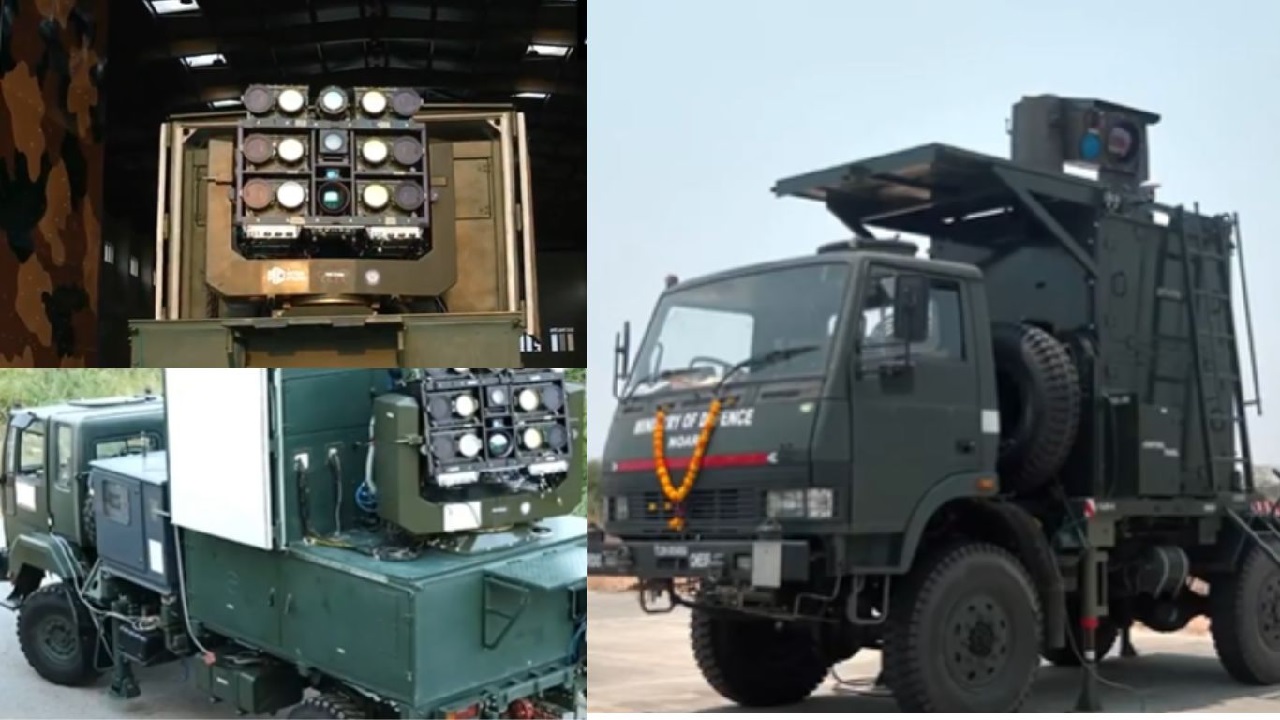A Major Milestone in India’s Defence R&D Capabilities
In a move that marks a giant leap in futuristic warfare, India’s Defence Research and Development Organisation (DRDO) successfully tested a Laser-Directed Energy Weapon (DEW) system on April 13, 2025. Conducted at the National Open-Air Range (NOAR) in Kurnool, Andhra Pradesh, the trial showcased India’s growing prowess in cutting-edge defence technologies—often likened to the sci-fi arsenal of Star Wars.
The tested Mk-II (A) Laser-DEW system is designed to disable or destroy aerial threats like drones, missiles, and other small projectiles with focused laser beams. The system is a part of a broader push by India to develop non-kinetic, high-energy defence platforms that reduce reliance on traditional ammunition.
DRDO chief Dr. Samir V. Kamat described the system as a game-changer, stating, “What you saw today was one of the components of the Star Wars technologies.”
DRDO’s Growing Arsenal of High-Tech Defence Systems
This laser system is only the latest feather in DRDO’s cap. Over the past year, India’s premier defence R&D agency has made significant strides in modernising and indigenising its military capabilities:
Agni-Prime Missile Test: A successful test of the next-generation ballistic missile that is lighter and more agile than its predecessors.
· UAV ‘Tapas’ Trials: Long-endurance unmanned aerial systems tailored for surveillance missions over hostile terrain.
· Hypersonic Wind Tunnel Research: India is one of the few countries to own a hypersonic wind tunnel facility, which aids in developing next-gen hypersonic weapons.
· Advanced Towed Artillery Gun System (ATAGS): DRDO-developed artillery with superior range and firepower, entering the final phase before induction into the Army.
These developments highlight DRDO’s growing role in transforming India from a net importer to a self-reliant innovator in defence technology.
Laser Weapons: How They Work and Why They Matter
The tested Mk-II (A) Laser-DEW works by firing an intense beam of laser energy that travels at the speed of light. Once a target—such as a drone—is detected by radar or Electro-Optic sensors, the laser locks on and burns through the structure or electronics of the threat in seconds.
Unlike traditional weapons, laser systems:
· Require no ammunition, just power.
· Have near-zero per-use cost, with officials comparing the expense of a few seconds’ use to a couple of litres of petrol.
· Cause minimal collateral damage, making them ideal for urban or densely populated conflict zones.
DRDO’s success places India in an elite group, alongside the US, China, Russia, and possibly Israel, which are working on similar systems.
Next Steps: From Ground to Sea and Sky
DRDO’s future plans are just as ambitious. According to Dr. Kamat, the agency is now working on miniaturising the laser weapon for deployment on naval ships and airborne platforms. He also hinted at developments in high-energy microwave systems and electromagnetic pulse (EMP) weapons, further expanding India’s non-kinetic warfare capabilities.
“This is a journey that has started today,” Kamat noted, signalling long-term commitment toward building a comprehensive directed-energy arsenal.
The Future of Indian Defence is High-Tech and Homegrown
India’s foray into directed energy weapons marks a paradigm shift in its defence strategy. With the rise of asymmetric threats like drone swarms and low-cost missile attacks, conventional defence mechanisms alone may no longer suffice. The DRDO’s laser-DEW system reflects India’s move toward intelligent, rapid-response, and cost-effective solutions.
As India continues to invest in futuristic technologies, the emphasis will likely remain on indigenisation, strategic autonomy, and export-readiness. The successful laser test is not just a military milestone—it is a statement of India’s growing technological ambition on the global stage.
(With inputs from agencies)








